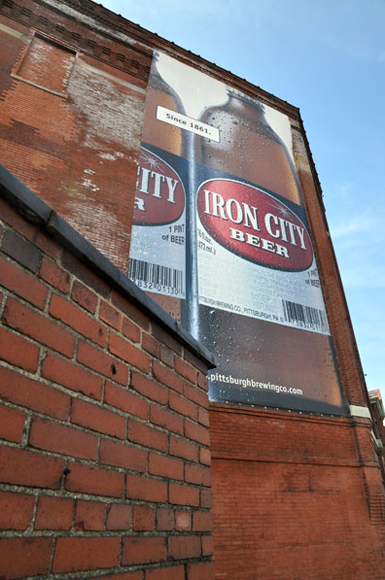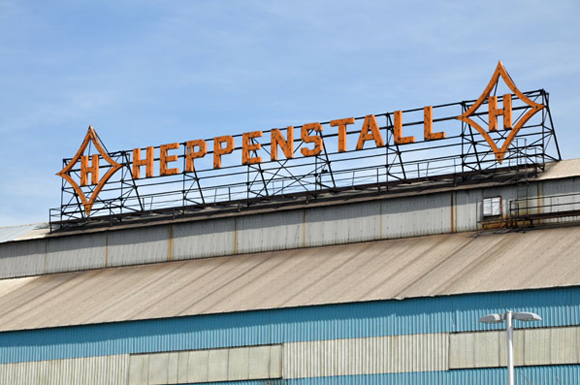South Hills High School opened its doors on Mt. Washington in 1917 and closed them in 1986. The sprawling structure sat vacant for more than twenty years, during which time the Mt. Washington Community Development Corp. replaced the building’s roof and otherwise kept it stable. A developer finally purchased the building from Pittsburgh Public Schools in 2006 and thanks to the keen eye of architects Rothschild Doyno Collaborative and Thoughtful Balance, it has been reincarnated as South Hills Retirement Residence, 106 units of senior housing with space for community assets such as a day care facility. The project was recently awarded LEED Gold certification accruing to a mix of co-generation and solar photo-voltaic panels that provide 70% of the building’s power, among other sustainable features.
The South Hills project is a shining example of adaptive reuse, or the re-purposing of older properties for a use other than their original design. Taking this route can be cheaper than new development, and financing for these projects is often easier to secure. Pittsburgh is filled with older buildings eager to be re-imagined including office buildings with a prime downtown address and schools whose architectural pedigree has placed them on the National Register of Historic Places.
Projects currently underway in the city include the RiverVue Apartments, 218 rental units in the former State Office Building that boast Point State Park as their front yard, and the expansion of 31st Street Studios, hulking former brick and metal warehouses that are morphing, Transformer-like, into Hollywood East in the shadow of the 31st Street Bridge.
Who are the next best candidates for adaptive reuse in Pittsburgh? It all starts downtown at the James H. Reed Building on Sixth Avenue, former headquarters of the Reed Smith law firm. The building’s elegant entrance screams “hotel!” and who better to do the retrofit than Kimpton Hotels, masters of adaptive reuse? Imagine “Hotel Monaco” over the doorway and a jewel-toned lobby acting as the living room lounge urbanites crave. Around the corner is the Henry W. Oliver Building designed by architect Daniel Burnham and close by is the Union Trust Building, whose stunning mansard roof commemorates the cathedral that formerly stood in its place. Both structures are woefully underutilized and if commercial isn’t the answer, perhaps they’re prime for downtown residential?
Then there’s the question of downtown retail, which has been debated for decades. Lord & Taylor kept shop in the former Mellon National Bank Building on Smithfield but that structure has been vacant since 2003, and Saks Fifth Avenue has exited its shiny black cube across the street.
Is it time for the city to rethink large-scale urban retail in favor of cultural attractions? It’s no secret that business is booming at the Benedum. Even so, not everyone agrees. “The mayor is committed to marketing as many properties as he can at the upcoming shopping center conference in Las Vegas,” says Robert Rubinstein, director of economic development for the Urban Redevelopment Authority. “If owners throw their property into the mix, the city can market a collection of shopping spaces. Retailers want to come in a pack.”
Eager to revive a one-time cultural gem is Marimba Milliones of the Hill Community Development Corp., which owns the New Granada Theater on Centre Avenue where Duke Ellington, Ella Fitzgerald and Cab Calloway once played. The 1927 Art Deco building possesses National Landmark status and has already undergone a stabilization process. Its next act awaits. “From a regional standpoint, it’s one of the hottest reuse options available,” according to Milliones.
Madison Elementary School, also in the Hill District, is an attractive, Romanesque-inspired edifice listed on the National Register of Historic Places and one of many vacant buildings owned by Pittsburgh Public Schools. Its proximity to the city center could lend to reuse for a non-profit or as a tech incubator.
The old Iron City Brewery in Lawrenceville is in new hands and while it won’t be reborn as a brewery, its owners are eager to work with the 9.5 acre site. The Heppenstall Site, massive blue buildings that once housed the Heppenstall Steel Company, awaits creative reuse along Lawrenceville’s riverfront and could it be a twin for 31st Street Studios?
Deep in the heart of Lawrenceville is the former Holy Family Church and adjacent St. John Neumann School, part of the ever-growing real estate portfolio of the Catholic Diocese of Pittsburgh. “Church buildings are a challenge because of their architecture,” says Mike Arnold, chief facilities officer of the Diocese. While it’s unlikely we’ll see Church Brew Works II, the unbeatable location could attract a performance space or artist studios. Off Butler Street is the old Leslie Park Pool which neighborhood activists Deb Knox and Susan Englert are eager to re-purpose as a community asset. It already is, to a certain extent, since the site hosted a much-talked-about accordion pool party in 2009 and, with the aid of Google, an urban stargazing party. If Knox and Englert run out of inspiration (unlikely), they can look to Cafe Alcazar in St. Augustine, Florida, housed in what was once the country’s largest indoor swimming pool.
More schools ripe for adaptive reuse include the former Rogers CAPA Middle School in Garfield, being eyed as a possible artists collective. Inspiration could come from the Blue Star Contemporary Art Center in San Antonio, located in that city’s revitalized King William neighborhood. Ft. Pitt Elementary School in Garfield is crowned by a graceful clock tower and the view to Pitt’s Cathedral of Learning offers plentiful inspiration. Sadly, it will close its doors in June and the hope is that an environmental charter school or Waldorf School will work with the site. The city’s environmental charter school in Frick Park has a waiting list in the hundreds, fueling an idea that could serve the area well.
Schenley High School in Oakland, alma mater to Andy Warhol, George Benson and Maurice Lucas, is a window-walled triangle that was a forerunner to green building principles thanks to ample day-lighting and natural ventilation from double-hung windows. Shuttered in 2011, the key to its survival is a developer with vision – and deep pockets – willing to work with a large structure. One more building that must live to see another day is the old Alcoa Building, presently on life support as the Regional Enterprise Tower. In a city that was built on steel and, yes, aluminum, this soft gray skyscraper is an ode to Pittsburgh past, present and future.
New Girl In Town ELAINE LABALME says everything old is new again. As it should be. Send feedback here.
Photographs copyright Brian Cohen
(from top) Iron City Brewery, Alcoa/Regional Enterprise Tower, Union Trust Building, Oliver Building, Heppenstall, South Hills Retirement





